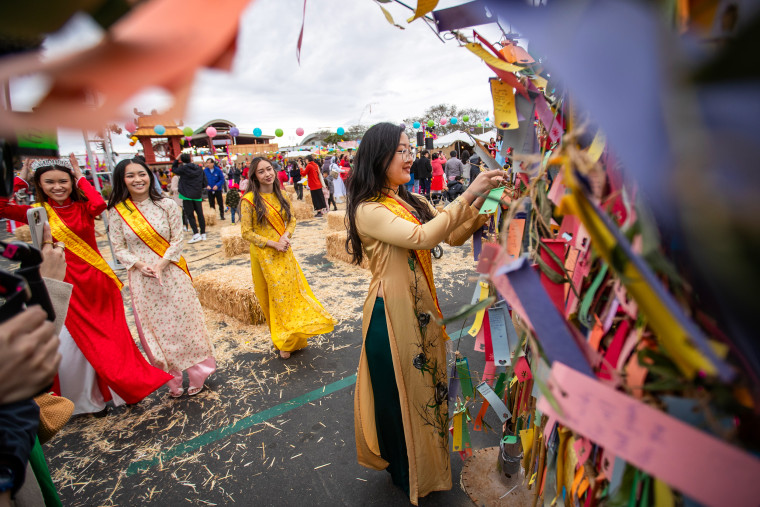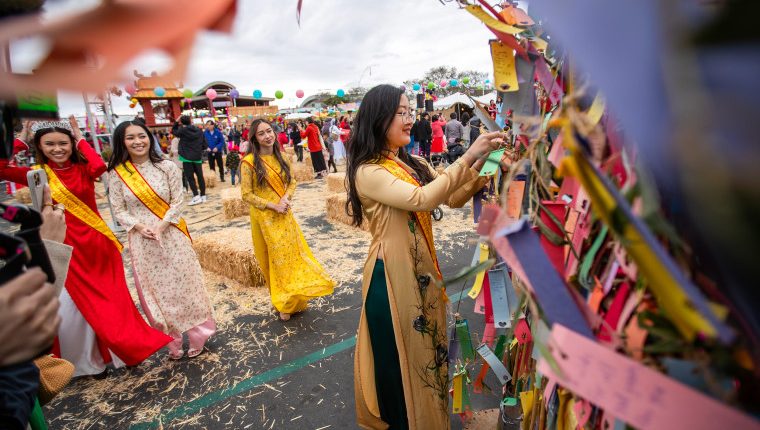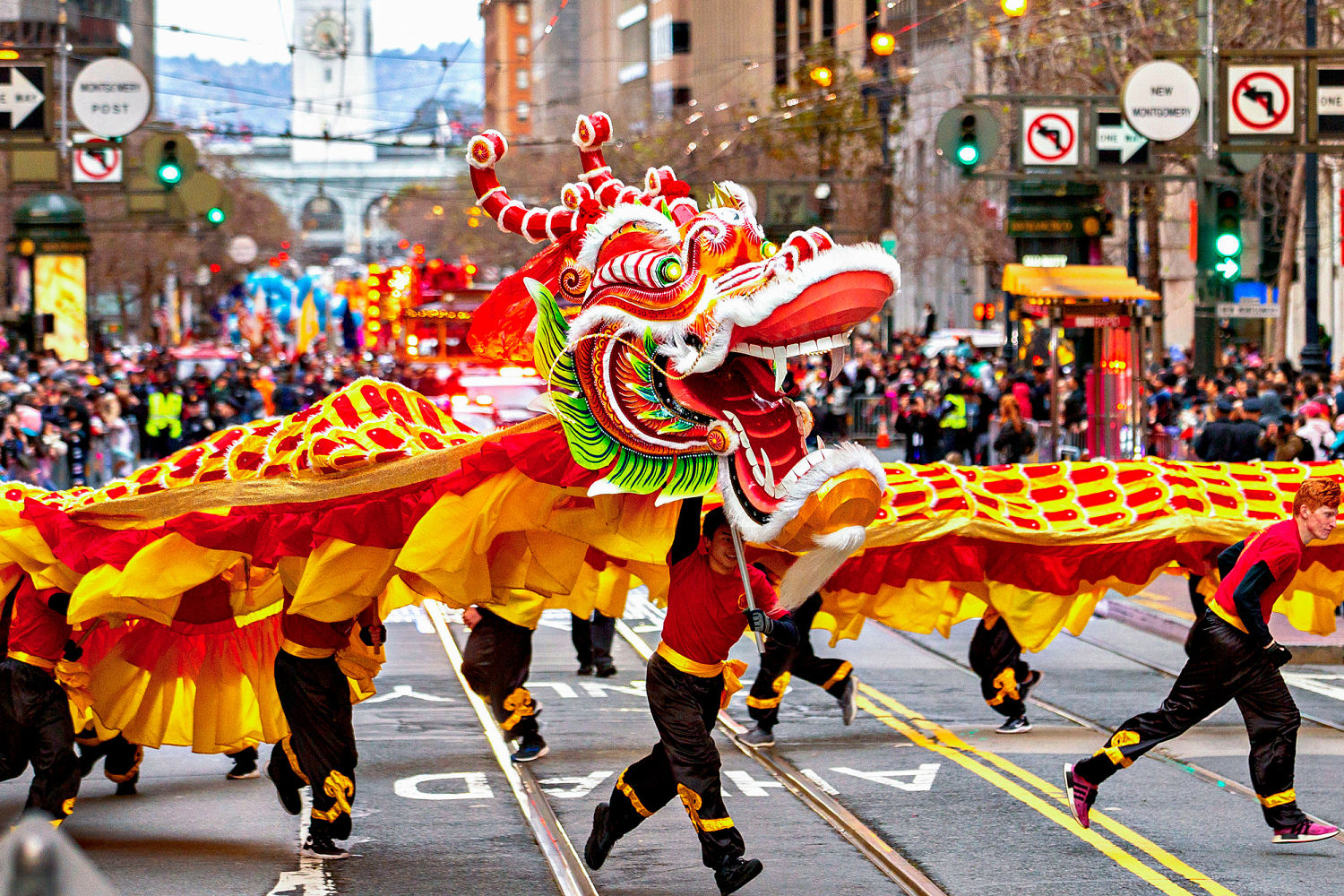In 1986, the San Francisco Chinese New Year Festival and Parade, one of the largest Lunar New Year celebrations in the U.S., added an unofficial secondary description to its culturally specific title — Lunar New Year — as a nod to inclusivity.
The addition, attuned to the mood of the time, aimed to reflect the diversity of the community, said Wayne Hu, a former parade director. Other U.S. cities and celebrations did the same. Now, many individual cultural celebrations like the Vietnamese Tet, the Korean Seollal and other spring festivals are united under one umbrella term — Lunar New Year.
Since the first event organized by the Chinese Chamber of Commerce in 1953, the San Francisco Chinese New Year Festival and Parade has always been a Chinese American celebration, with a mission to promote cultural tourism in the city’s Chinatown, said Hu, the parade’s director from 1986 to 2010.
“Using the ‘Lunar New Year’ is the extension of our celebrations which recognizes our Bay Area Asian community,” said Hu. “But more importantly, demonstrates that this is a San Francisco Bay Area celebration that includes all.”
The San Francisco event represents the tension that many organizers face — how to maintain cultural integrity while also acknowledging other cultures that celebrate the same holiday. In the name of inclusivity, what happens to individual cultural festivals?

Why Lunar New Year is most closely associated with Chinese culture
Many Asian countries use the lunisolar calendar, which tracks the cycle of the moon’s phases, to mark the start of a new year and the arrival of spring. This year, the holiday starts on Feb. 10.
To reflect the diversity of the community, the San Francisco Chinese New Year Festival and Parade welcomes different cultural performers, said Harlan Wong, the event’s current director. This year, Japanese taiko drummers will perform at the Feb. 24 parade.
David Lei, a board member of the Chinese Historical Society of America, says that while he supports the spirit of inclusivity, it also raises a question: What do non-Lunar New Year performances add to a decidedly Chinese New Year parade?
“People come to see the firecrackers and the floats that tell stories about hope, aspiration and auspiciousness for the coming year,” said Lei, a historian and longtime parade participant.
The first Chinese New Year in the U.S. — and the reason Lunar New Year is often associated with Chinese culture — can be traced through immigation history. The first wave of Chinese immigrants in the mid-1800s brought with them their homeland’s traditions, including how to welcome the new year. At first, their new year’s celebrations were likely insular small parties, said Lei.
In 1871, Belleville, New Jersey — the first East Coast Chinese community — hosted one of the first recorded Chinese new year celebrations, complete with fireworks.
New year celebrations were a way to invite the community to Chinese enclaves and demystify the perception of foreignness, said Hu. Because many Americans have experienced the holiday through Chinatowns, associating the holiday with one culture makes sense.
It’s just not completely accurate. Many different Asian countries celebrate the same holiday, including Indonesia andMalaysia. In Singapore, the new year celebration is a national public holiday that allows for time off school and work. In Asia, each country celebrates its own national holiday without the need to acknowledge other cultures.
Does a broad umbrella term flatten individual celebrations?
In the U.S., recognition of Lunar New Year continues to grow. Yet, without the resonance of national recognition, communities, cities and organizations are left with the responsibility of carving out their own celebrations.
“Celebrating the Lunar New Year in the U.S. is important, albeit on a smaller scale,” said Tri Chan Tran, a professor of Vietnamese and linguistics at the University of California, Irvine. “Because it shows that the diaspora wants to be connected with their roots and cultures, which they want to preserve,” he said.
“Lunar New Year” is an umbrella term that can expand and embrace different cultural celebrations of the holiday. But can the broadened term flatten individual celebrations?
According to Tran, using “Lunar New Year” is a sign of respect, linguistically and culturally, to all the different countries that celebrate the holiday. But he said it’s also OK to celebrate individually.
“If it’s a Chinese community celebrating, it makes sense to refer to the celebration as Chinese New Year,” said Tran. “Likewise for Tet for the Vietnamese New Year.”
This year, the USC Pacific Asia Museum in Pasadena, California, is celebrating the new year with a slate of Korean, Chinese, Vietnamese and Thai performances.
Annie Tram, co-chair of the Tet Festival in Costa Mesa, California, says recognizing the importance of the Lunar New Year lends more recognition to other ethnicities as well.
“Each culture still has their own special uniqueness,” said Tram. “But it all falls under the same umbrella of like we all want the same thing.”
Togetherness, wellness and good fortune are unifying themes across most Lunar New Year celebrations.
The Tet Festival is organized by the Union of Vietnamese Student Association to celebrate their Vietnamese heritage. To call it anything else would be inaccurate, according to Tram. At the three-day event, one of the attractions will be a replica of a Vietnamese village.
“The idea is that once you walk through the gate, you feel like you’re transported back to Vietnam,” said Tram.
To celebrate the new year, experts say, we don’t have to settle for a scarcity mindset. We can celebrate individual cultures. We can unite. And, yes, there is space for both to exist.
“Absolutely,” said Tran. “I think it’s a smart move.”
For more from NBC Asian America, sign up for our weekly newsletter.
Source: | This article originally belongs to Nbcnews.com










